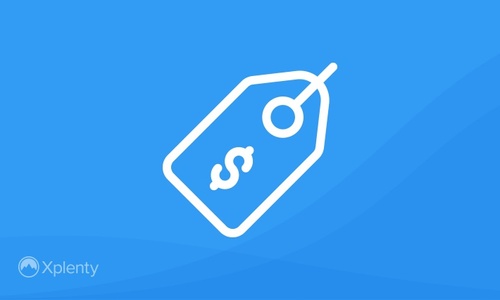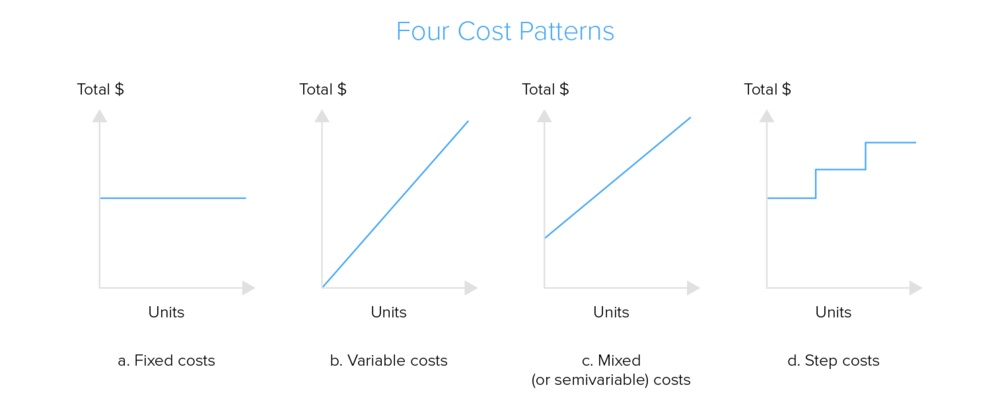Choosing the right data warehouse, together with the right business intelligence and analytics tools, is essential in order to get cutting-edge insights from your raw data. But there’s one all-important question to answer before you start your search: how much does a data warehouse cost, exactly?
Of course, the hope is that your choice of data warehouse will deliver a healthy return on investment—but the ROI of any data warehouse will heavily depend on its features and how well it meshes with your existing business workflows and processes. According to the IT research and advisory firm Gartner, “cost should be a secondary consideration to the achievement of business benefits” when purchasing BI software. In other words, focusing on functionality will be more successful in the long run than focusing primarily on cost.
With all that said, however, the cost is still an important factor in any data warehouse purchasing decision. In this article, we’ll go over the various components that play into the cost of a data warehouse, so that you can make a smarter, more informed decision for your organization.
What Do You Get From a Data Warehouse?
First, it's important to clarify what a data warehouse actually does. A data warehouse is responsible for storing your enterprise data, pulled from a diverse array of sources, in an organized, efficient manner.
This data warehouse is then paired with a business intelligence tool, helping users identify trends and perform sophisticated analyses. Your data warehouse ensures the information can easily be queried by your choice of BI solution. In other words, the data warehouse doesn’t provide business insights itself, but it’s an essential part of getting the job done.
A data warehouse is distinct from a database. In fact, ETL tools such as Integrate.io take information from separate locations—including databases and other sources such as files and websites—and then store it in a single centralized data warehouse. The ETL process (extract, transform, and load) can happen manually or automatically, under scheduled preset conditions (e.g. at a certain time of day). Once data is in the warehouse, it can then be configured and analyzed.
Your choice of ETL solution should work seamlessly with the sources of data that you rely on. E-commerce websites, for example, need to make sure that their ETL tool is compatible with Shopify, Magento, Salesforce, or whatever SaaS application you use for your business.
What Affects the Price of a Data Warehouse?
There are a few different components that go into determining the cost of a data warehouse: the storage platform, the transformation pipeline, and the people who make it all work. Each one of these factors will affect data warehouse pricing, with a number of providers competing for your business at each stage.
1) Data Storage
First, of course, you’ll have to choose where to actually house your data warehouse, i.e. where the data will reside. As with most enterprise technology, you can opt for on-premises hardware that you purchase and maintain yourself or a cloud-based solution that’s provisioned to you over the Internet.
The question of cloud vs. on-premises data warehouses is a hotly debated one. In the past several years, we’ve seen a greater movement towards cloud-based solutions. According to a 2019 survey by Unisphere Research, 41 percent of companies with a data warehouse say that they’re running at least part of the warehouse in the cloud.
Cloud data warehouses don't require the space, upfront investment, or ongoing maintenance that their on-site counterparts do. In addition, they support accessibility regardless of geographic location, making them optimal for remote work arrangements.
Moving to the cloud practically means that you’re already saving money. That's because cloud solutions largely don’t require hardware, on-site IT staffers, space for the machines, or operational costs like electricity. Cloud solutions can cost $18 to $84 per terabyte per month, while on-site solutions can cost up to $1,000 per month ($12,000 per year) by some estimates.
Still, there are some good reasons to choose an on-premises data warehouse solution. If you care about speed, for example, your data might move more quickly from on-premises to a client location than from the cloud, which stores data on servers in multiple locations worldwide. What’s more, an on-premises solution gives you complete control over how your data warehouse connects with other systems.
Some of the most notable cloud warehouse providers include:
- Amazon Redshift
- Google BigQuery
- Snowflake
- Microsoft Azure
- IBM Db2
If you expect that the data in your warehouse will be frequently accessed, you'll need a "hot" storage solution, i.e. one that offers high performance and speed. If you’ll be accessing the data less frequently, a "cold" storage solution (where you sacrifice a little bit on speed and performance in exchange for lower prices) may suffice.
2) BI and Visualization Software
As discussed above, data warehouses are much more effective when paired with powerful business intelligence and visualization tools. Since humans are highly visual creatures, the terms “business intelligence tool” and “visualization tool” are often used interchangeably. However, the term “visualization” refers specifically to visual methods of depicting data (such as dashboards, charts, graphs, and reports), while BI tools are any software that helps process and analyze large quantities of data to extract valuable business insights.
The business software review website Capterra estimates that a business intelligence solution costs $3,000 per year on average, with a low end of $600, and a high end of $6,000. If you’re really strapped for cash, you can even opt for an open-source data visualization solution such as D3.js, a JavaScript library for building web-based visualizations. Of course, open-source BI tools are often more technically complex, requiring you to hire an in-house developer for an additional cost (see below).
However, like the data warehouse itself, cost shouldn’t be the only factor that plays into your buying decision for a BI tool. The goals of your BI workflow should determine which solution you purchase—you can focus on regulatory compliance, revenue optimization, or cost reduction, among other objectives.
3) ETL Software
Moving the data from source locations to the target data warehouse typically happens through an ETL (extract, transform, load) solution. The cost of this solution will depend on which platform you choose and the pricing model. Each ETL tool typically supports a different suite of databases, so you want to be certain that your solution will sync with the data you want to store in your warehouse.
Integrate.io, for example, has a full suite of integrations for both source databases and target data warehouses. The databases we support include MySQL, Oracle, MongoDB, IBM Db2, PostgreSQL, MariaDB, and Microsoft Azure SQL Database, among many others. Meanwhile, the data warehouses we support include Snowflake, Amazon Redshift, and Google BigQuery.
When it comes to ETL tool pricing, the most important thing to note is the cost pattern used by your choice of partner:
Many ETL solutions use the variable pricing model (Diagram B). These packages start off free or at a low introductory price, but scale up exponentially based on the number of jobs you run. This means that, while your initial monthly bill may start low, you are pretty much guaranteed to see your costs rise over time. If you have a particularly heavy usage one month, you might be stuck paying massive (and unexpected) overages. This kind of unpredictability can make it difficult to stick to a consistent budget.
To make sure your costs stay consistent month to month, you’ll likely want to opt for an ETL solution that employs a fixed or stepped pricing model (Diagrams A or D). The fixed-rate model starts at one price and stays there regardless of workload, while the stepped model increases at set amounts based on predictable factors.
Integrate.io, for example, charges a single monthly rate per connector, so that you pay only for the data sources you actually use. Even when adding more connectors, you’ll know exactly how much those connections will cost, and you can budget accordingly. You can send an unlimited amount of data through an integration without increasing your monthly bill, while still having the ability to scale up when you need to.
4) IT Personnel
Finding the right people is crucial when buying a data warehouse (especially if you’ve gone with an on-premises solution when the entire system could go down with no warning). Some of the roles you may have to fill include:
- Information systems manager ($12,000/month)
- Backend developer ($8,800/month)
- Database architect ($9,400/month)
- Data analyst ($7,500/month)
Of course, these salaries are only an average and may depend on the market rate and cost of living in your area. In addition, the amount you spend depends on the strain you put on each of these members of the team. That pressure depends on the work you ask them to do, which in turn depends on the usability of your component solutions.
Integrate.io, for example, is a simple, drag-and-drop ETL solution with a user-friendly visual interface and managed services options. Working with Integrate.io could potentially save you a lot of developer costs, which as we discuss above could run you about $8,800 per month per person.
The True Cost of a Data Warehouse
As we’ve seen, the true cost of a data warehouse is much more than the cost of storing the data itself. So what’s the total price of a data warehouse solution?
Here are some rough figures, taking into account all of the above components. Based on these numbers, you should be able to estimate your own organization’s data warehouse pricing:
- Cloud storage solution: $18 to $82 per terabyte per month
- On-site storage solution: $1,000 per month
- Visualization software: $600 to $6,000 per year
- ETL software: $800 to $8,000+ per month (either fixed or variable)
- Personnel: $37,700 per month
In short, a data warehouse can be a significant investment. However, the returns that you’ll reap in terms of business intelligence will be invaluable. Data warehouses give you smarter, more accurate insights into your internal operations and the business landscape around you, letting you make better decisions and lower your overall risk.
Using Integrate.io with Your Data Warehouse
ETL software is a critical yet often overlooked component of any data warehouse. When it comes to your options for ETL tools, you can’t go wrong by choosing Integrate.io.
The Integrate.io platform has been custom-built to be intuitive and user-friendly, so you don’t have to pay the costs of hiring, onboarding, and training new developers. What’s more, Integrate.io’s stepped-rate pricing structure is transparent, affordable, and predictable. You pay only for the connectors that you use, giving you the ability to accurately anticipate monthly costs.
But the pricing is just one benefit: Integrate.io is also a powerful ETL platform to work with. Using Integrate.io's simple drag-and-drop interface, you can create high-speed connections between your databases and your data warehouse, giving you real-time availability without sacrificing data integrity or data quality.
Ready to give Integrate.io a try? Get in touch with us today to schedule a chat about your business needs and objectives, or to sign up for a free trial of the Integrate.io platform.











